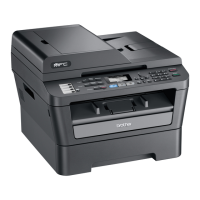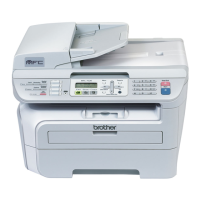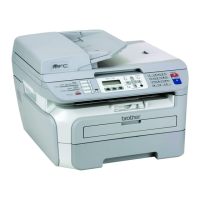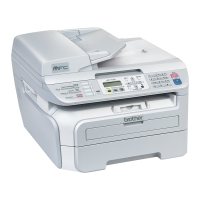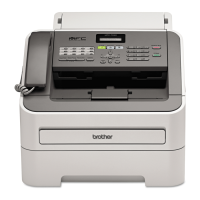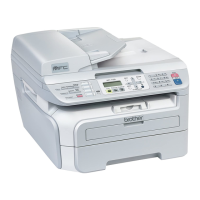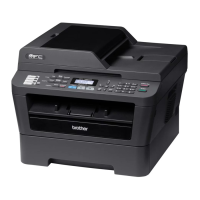How to fix 'Replace Drum' error on Brother MFC-7360N?
- AAaron SmithAug 27, 2025
If your Brother All in One Printer displays 'Replace Drum', it means it is time to replace the drum unit. Replace the drum unit.
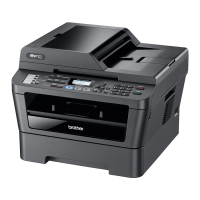








How to fix 'Replace Drum' error on Brother MFC-7360N?
If your Brother All in One Printer displays 'Replace Drum', it means it is time to replace the drum unit. Replace the drum unit.
What does 'Manual Feed' mean on my Brother All in One Printer and how to solve it?
If your Brother All in One Printer displays 'Manual Feed', it means Manual Feed was selected as the paper source when there was no paper in the manual feed slot. Place a sheet of paper in the manual feed slot.
What to do if Brother MFC-7360N All in One Printer says no paper?
If your Brother All in One Printer displays a 'No Paper' error, it means the printer is out of paper or the paper isn't correctly loaded. Refill the paper in the paper tray and press Start, or remove the paper and load it again, then press Start. If the issue continues, the paper pick-up roller may need cleaning.
What to do if my Brother MFC-7360N says 'DR Mode in Use'?
The message 'DR Mode in Use' on your Brother All in One Printer means the machine is set to Distinctive Ring mode, preventing you from changing the Receive Mode from Manual to another mode. Set Distinctive Ring to Off.
What does 'Comm.Error' mean on my Brother MFC-7360N?
If your Brother All in One Printer displays 'Comm.Error', it means poor telephone line quality caused a communication error. Try sending the fax again or connect the machine to another telephone line. If the problem continues, contact the telephone company to check your telephone line.
What does EL error mean on Brother MFC-7360N?
If your Brother All in One Printer displays an 'EL Error', the machine has a mechanical problem. Open the front cover and close it again.
What does 'Manual Feed' mean on my Brother All in One Printer?
If your Brother All in One Printer displays 'Manual Feed', it means Manual Feed was selected as the paper source when there was no paper in the manual feed slot. Place a sheet of paper in the manual feed slot.
What does 'DR Mode in Use' mean on my Brother All in One Printer?
If your Brother All in One Printer displays 'DR Mode in Use', it means the machine is set to Distinctive Ring mode, and you cannot change the Receive Mode from Manual to another mode. Set Distinctive Ring to Off.
Why does my Brother All in One Printer say 'No Paper'?
If your Brother All in One Printer displays 'No Paper', it means the printer is out of paper or the paper isn't loaded correctly. You can either refill the paper tray and press Start, or remove the paper and reload it before pressing Start again. If the problem continues, the paper pick-up roller may need cleaning.
What causes 'Document Jam' on Brother MFC-7360N All in One Printer?
A 'Document Jam' error on your Brother All in One Printer means the document wasn't inserted or fed correctly, or the document scanned from the ADF was too long.
| Duplex printing | No |
|---|---|
| Print technology | Laser |
| Maximum resolution | 2400 x 600 DPI |
| Time to first page (black, normal) | 8.5 s |
| Print speed (black, normal quality, A4/US Letter) | 24 ppm |
| Scan to | E-mail, File, Image, OCR |
| Grayscale levels | 256 |
| Input color depth | 48 bit |
| Image formats supported | BMP, JPG, PNG, TIF |
| Maximum scan resolution | 19200 x 19200 DPI |
| Optical scanning resolution | 600 x 2400 DPI |
| Copier resize | 25 - 400 % |
| PC free copying | Yes |
| Maximum copy resolution | 600 x 600 DPI |
| Time to first copy (black, normal) | 11 s |
| Copy speed (black, normal quality, A4) | 24 cpm |
| Dimensions (WxDxH) | 405 x 399 x 316 mm |
| All-in-one functions | Copy, Fax, Print, Scan |
| Compatible operating systems | Linux Mac OS X 10.4.11, 10.5.x, 10.6x Windows 7, Vista, XP, 2000 |
| Faxing | Mono faxing |
| Fax memory | 400 pages |
| Modem speed | 14.4 Kbit/s |
| Fax speed dialing (max numbers) | 208 |
| Total input capacity | 250 sheets |
| Total output capacity | 100 sheets |
| Total number of input trays | 1 |
| Auto document feeder (ADF) input capacity | 35 sheets |
| Internal memory | 32 MB |
| Processor family | ARM |
| Compatible memory cards | Not supported |
| Sound power level (standby) | 30 dB |
| Sound pressure level (printing) | 53 dB |
| Display | LCD |
| Market positioning | Home & office |
| Display number of lines | 2 lines |
| Display number of characters | 16 |
| Maximum print size | 216 x 356 mm |
| Media weight (tray 1) | 60 - 105g/m2 |
| Paper tray media types | Bond paper, Envelopes, Labels, Plain paper, Recycled paper |
| Non-ISO print media sizes | Executive |
| ISO A-series sizes (A0...A9) | A4, A5, A6 |
| ISO B-series sizes (B0...B9) | B5, B6 |
| JIS B-series sizes (B0...B9) | B5 |
| Maximum ISO A-series paper size | A4 |
| Supported network protocols (IPv4) | TCP/IP (IPv4 & IPv6) |
| Direct printing | - |
| Standard interfaces | USB 2.0 |
| USB 2.0 ports quantity | USB 2.0 ports have a data transmission speed of 480 Mbps, and are backwards compatible with USB 1.1 ports. You can connect all kinds of peripheral devices to them. |
| Power consumption (standby) | 0.9 W |
| Power consumption (PowerSave) | 65 W |
| Power consumption (average operating) | 495 W |
| Package weight | 14800 g |
| Sustainability certificates | ENERGY STAR |
| Maximum duty cycle | 10000 pages per month |
Explains symbols and conventions used in the manual for warnings, cautions, and notes.
Details warnings about electrical hazards, hot surfaces, and handling the product safely.
Provides safety instructions for using the power cord and extension cords.
Guidance on how to read and understand the user documentation for the machine.
Instructions on how to access the Advanced User's Guide, Software User's Guide, and Network User's Guide.
Information on how to access Brother support online, by phone, and through customer service.
Explains the function of each key on the control panel, including One Touch, FAX, COPY, PRINT, and LCD.
Instructions for setting paper type and size to ensure optimal print quality.
Guidelines for handling and using special paper types like envelopes and labels.
How to change fax resolution for better quality, for next fax or default settings.
Instructions on how to send the same fax message to multiple recipients efficiently.
Enables sending important documents immediately without waiting for memory transmission.
Guides on selecting the appropriate receive mode based on telephone line services.
Allows receiving faxes automatically even if the call is answered manually.
Options to receive faxes remotely, including Fax Forwarding, Paging, Fax Storage, and PC-Fax Receive.
Chart showing options for storing One Touch or Speed Dial numbers with IFAX and E-mail.
Instructions on how to set up Group numbers for sending the same fax to many recipients.
Procedures for replacing toner cartridges and drum units when indicated by the machine.
Steps for cleaning the machine's exterior, scanner, and corona wire for optimal performance.
List of common error messages, their causes, and recommended actions to resolve them.
Troubleshooting tips for issues related to paper feeding, jams, and curling.
Guidance for resolving issues with network printing, scanning, and PC-Fax features.
Explains how to navigate the menu table to program machine settings and options.
Details on setting up TX Lock, Secure Function Lock, and Setting Lock for machine security.
Provides information on printer type, memory, power source, and consumption.
Details on supported document sizes, paper types, weights, and output tray capacity.
Technical details for fax capabilities, modem speed, resolution, and copy functions.
